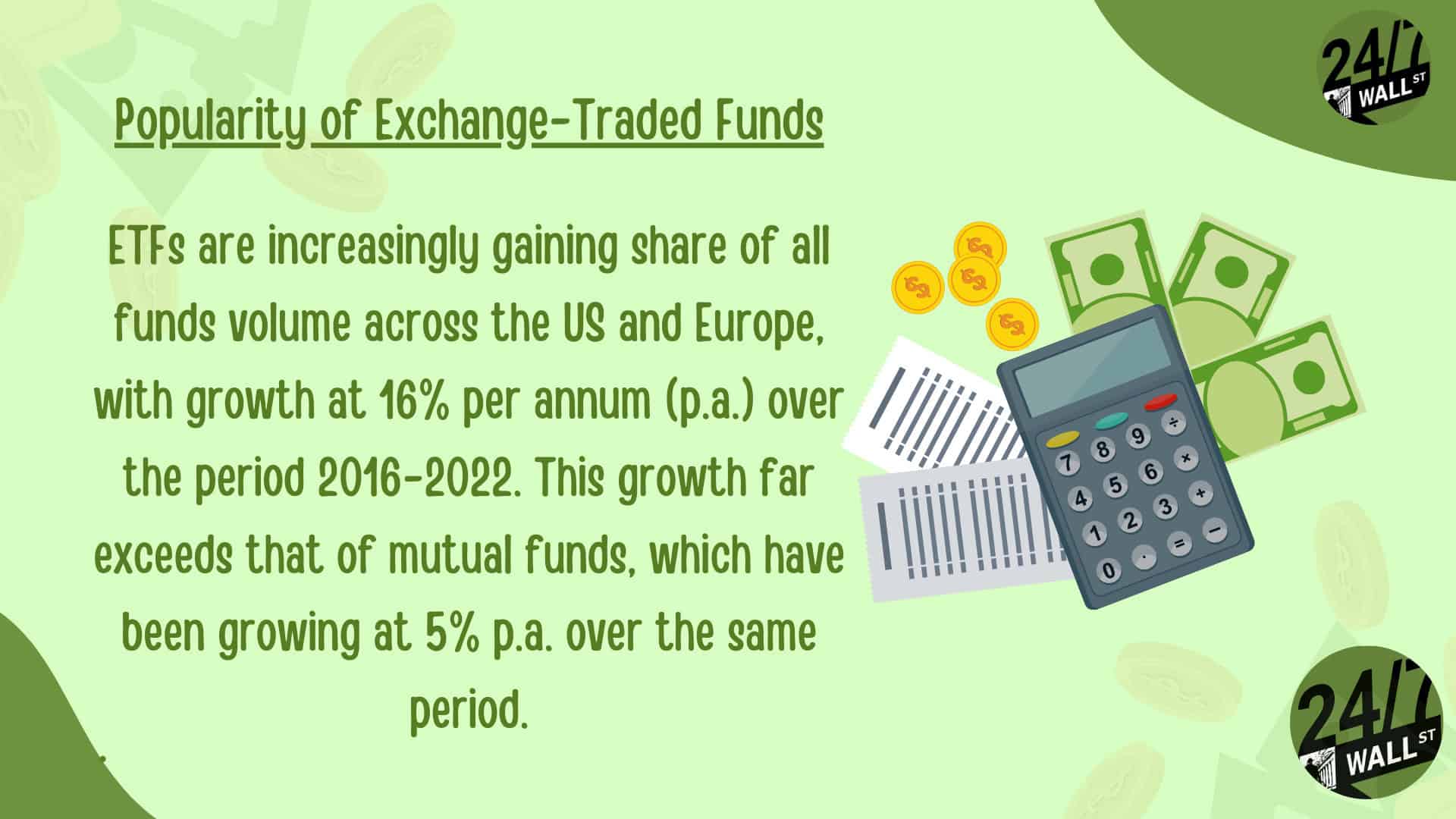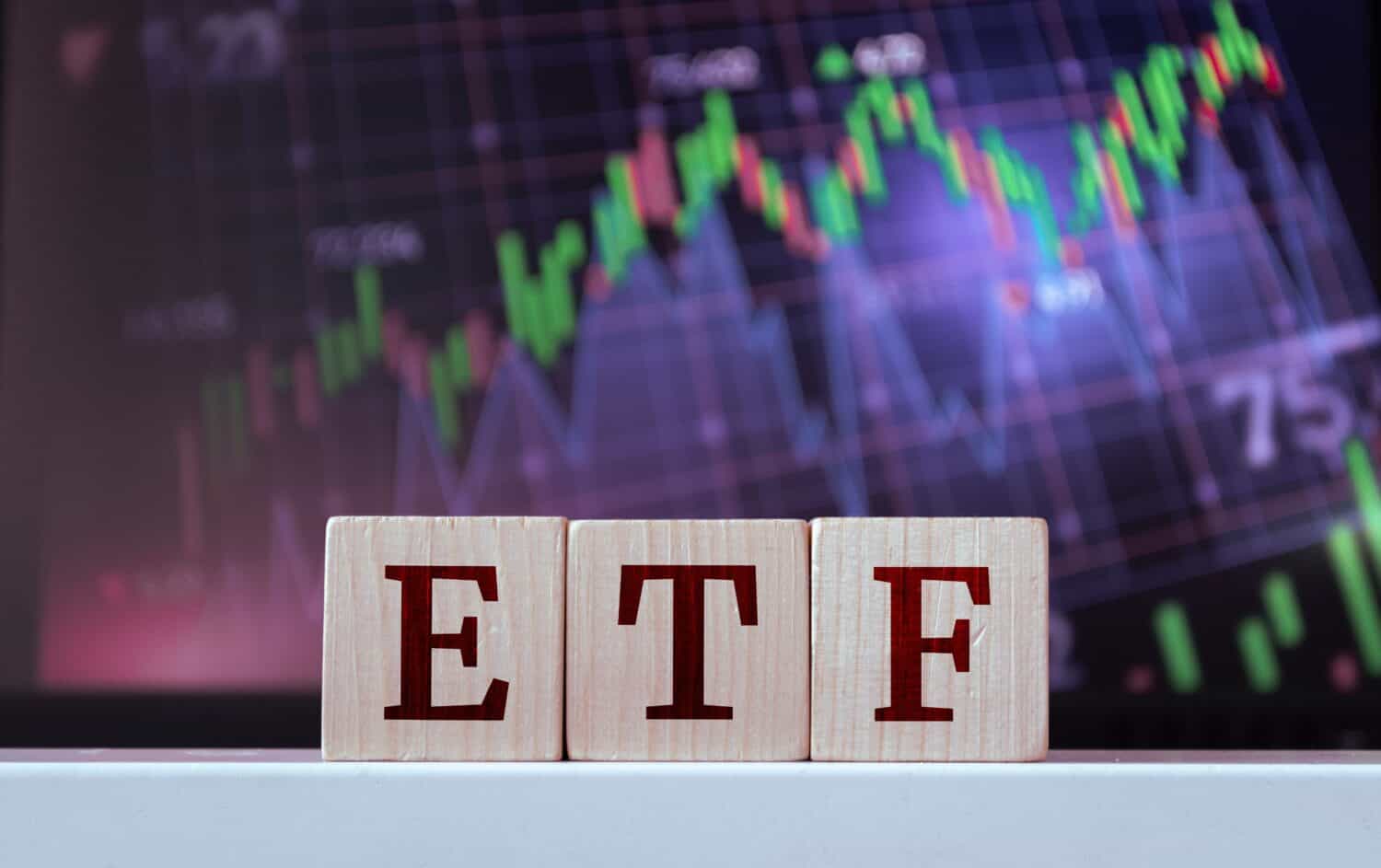
In the ever-changing world of investing, ETFs have become the go-to choice for many novice and seasoned investors. ETFs are “baskets” of stocks. When you buy an ETF, you’re investing in all the stocks held by the ETF. Therefore, they’re a convenient way to get instant diversification.

We’ll dive into two popular ETFs in this article: the Vanguard S&P 500 ETF (NYSE: VOO) and the Vanguard Growth Index Fund ETF (NYSE: VUG).
The underlying objectives and investment strategies for these ETFs are very different despite them both existing under the Vanguard umbrella.
Choosing between VOO and VUG ultimately depends on your individual investment goals, risk tolerance, and desired level of exposure to the growth sector.
Let’s take a look at exactly what this means:
What is VOO?

The Vanguard S&P 500 ETF is a passively managed investment vehicle designed to track the performance of the S&P 500 Index. This index tracks 500 of the largest publically treated companies in the United States across many different sectors.
When you purchase VOO, you’re getting a very small portion of these 500 companies, gaining exposure to a huge amount of the U.S. stock market in a single buy. This provides instant diversification and potentially mitigates risks associated with investing in a single company or sector.
VOO prioritizes stability and long-term growth by holding diverse companies. It closely mirrors the performance of the S&P 500, meaning it tends to fluctuate along with the larger stock market.
For those seeking exposure to the U.S. stock market, this makes VOO a very popular choice.
What is VUG?

The Vanguard Growth Index Fund ETF is similar to VOO, but it takes a different approach. VUG focuses on capturing future growth potential within the US market. It tracks the CRSP US Large Cap Growth Index, which specifically tracks companies with high growth potential.
These companies are typically leaders in their industries and have strong revenue and growing earnings potential.
While VOO is very diversified across several sectors, VUG’s portfolio tends to lean towards technology, healthcare, and other high-growth industries. This focus on growth stocks can lead to higher earnings, but it comes with inherent volatility.
VUG’s holdings are more susceptible to market fluctuations than VOO’s more broad focus.
VOO vs. VUG: What Fund is Right for You?

Fees
Like all ETFs, VOO and VUG both have annual fees that pay for the management of the funds. This is called the ETFs’ “expense ratio.” Luckily, both of these ETFs have comparatively low fees. Currently, VOO’s is at 0.03%, while VUG’s is at 0.05%.
This means a larger portion of your investment gets channeled towards actual growth. VOO’s lower expensive ratio means that you’ll get to keep even more of your profit. However, the difference between these two ETFs is so small that we don’t recommend using it as the sole deciding factor.
Risk
All investments are risky, but some are riskier than others. There are many ways to measure risk. One way to measure it is with Beta.
Beta measures an investment’s volatility compared to the overall stock market. The market always has a Beta score of 1. A score lower than this suggests a volatility lower than the overall market, while a Beta score higher than one suggests the opposite.
This is where a big difference between VOO and VUG lies. VOO, thanks to its diversified holdings, has a Beta very close to 1. It tends to mirror the market well. This provides a smoother ride for your investment.
On the other hand, VUG’s focus on growth has led to more volatility (and, therefore, more risk). VUG’s price fluctuations tend to be more pronounced. While this could mean higher returns, it also means lower dips.
VUG’s higher volatility makes it better suited for long-term investors who can weather market fluctuations. VOO has lower volatility, making it better for investors with shorter timeframes.
Historical Performances
Past performance does not guarantee how well a stock is going to do in the future. There have been many “reliable” stocks that have dropped out of the sky over the years. However, historical performances are still something you should keep in mind.
VUG regularly outperforms VOO long-term. Its growth orientation allows it to gain slightly higher returns in the five-year and ten-year outlooks. However, VUG’s high volatility can lead to great fluctuations along the way.
In a market downturn, VUG can dramatically underperform VOO, but it typically makes up lost ground when the market swings back around. For this reason, we recommend VUG for those who can ride out these downturns by holding the ETF for several years.
VOO’s smoother growth works well for risk-averse investors and those on a shorter timeline.
Top Holdings
The underlying holdings of VOO and VUG are constantly changing depending on changes in the underlying indexes. However, they are often somewhat similar. VUG tends to put more assets in its first few holdings, while VOO spreads out its assets a bit more. This accounts for some of VUG’s volatility.
Here is an overlook of VOO’s top 10 holdings (which currently represent just over 34% of its assets):
-
- Apple Inc. (AAPL): 6.97%
- Microsoft Corp. (MSFT): 6.54%
- NVIDIA Corp. (NVDA): 6.20%
- Amazon.com Inc. (AMZN): 3.45%
- Meta Platforms Inc. (META): 2.41%
- Alphabet Inc. Class A (GOOGL): 2.03%
- Berkshire Hathaway Inc. Class B (BRK.B): 1.82%
- Alphabet Inc. Class C (GOOG): 1.70%
- Eli Lilly & Co. (LLY): 1.62%
- Broadcom Inc. (AVGO): 1.50%
Conversely, here are VUG’s top 10 holdings, which make up over 59% of the ETF’s total assets:
- Apple (NASDAQ: AAPL)
Microsoft (NASDAQ: MSFT)
NVIDIA (NASDAQ: NVDA)
Amazon.com Inc. (NASDAQ: AMZN)
Meta (NASDAQ: META)
Alphabet Inc. Class A (NASDAQ: GOOGL)
Eli Lilly (NYSE: LLY)
Alphabet Inc. Class C (NASDAQ: GOOG)
Tesla (NASDAQ: TSLA)
Visa (NYSE: V)
VOO’s diversification offers a smoother ride with lower volatility, but its returns might be more moderate. Conversely, VUG’s focus on growth stocks can lead to potentially amplified returns alongside increased risk due to sector concentration.
The type of investor you are should affect which ETF you choose.
Investment Timeline
A huge factor to consider when choosing between VUG and VOO is your investment timeline. This factor is so huge that it deserves its own section. If you remember only one part of this article, it should be this section!
If you’re investing for less than five years, prioritize capital preservation. Market fluctuations can be very impactful in short-term investing. If you need your money in three years, you won’t be able to wait out downturns.
In these cases, VOO’s diversified holdings and lower volatility make it the better choice for short-term investors. Its emphasis on stability aims to minimize significant losses during market downturns.
You may even want to look at other ETFs, like SPDR S&P 500 ETF Trust (NYSE: SPY), which is similar to VOO. We have another article on SPY vs. VOO to help you choose between these two ETFs.
If you’re looking to buy and hold for over ten years, you have time on your side. This means you can ride out potential market volatility. While both VOO and VUG experience fluctuations, a longer timeframe allows for recovery from short-term dips.
VUG’s focus on growth stocks is often more appealing for long-term investors. The potential for higher returns is more attractive over a long horizon. There will be more time available to smooth out downturns and capture gains.
Choosing the Right ETF for You

Vanguard offers both VOO and VUG, but they have significantly different investment strategies. VOO prioritizes stability and broad market exposure, while VUG focuses on capturing growth potential.
If you’re investing for a short period or are risk-averse, choose VOO. If you plan to hold for over ten years and don’t mind extra volatility, choose VUG.
In 20 Years, I Haven’t Seen A Cash Back Card This Good
After two decades of reviewing financial products I haven’t seen anything like this. Credit card companies are at war, handing out free rewards and benefits to win the best customers.
A good cash back card can be worth thousands of dollars a year in free money, not to mention other perks like travel, insurance, and access to fancy lounges.
Our top pick today pays up to 5% cash back, a $200 bonus on top, and $0 annual fee. Click here to apply before they stop offering rewards this generous.
Flywheel Publishing has partnered with CardRatings for our coverage of credit card products. Flywheel Publishing and CardRatings may receive a commission from card issuers.
Thank you for reading! Have some feedback for us?
Contact the 24/7 Wall St. editorial team.





